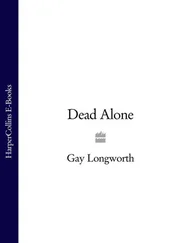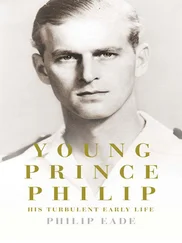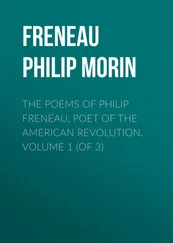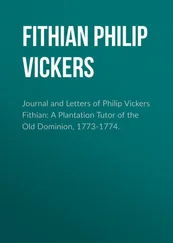9. See J. Fennell’s The Emergence of Moscow 1304-1359 (London, 1968), passim, for a repeated struggle to extract a credible explanation from the sources. Fennell’s work has contributed much to the account which follows. For a more positive if less painstaking treatment see also N. Borisov, Ivan Kalita (Moscow, 1997).
10. Fennell, The Emergence of Moscow, pp. 4, 90—93.
11. Ibid., p. 112.
12. Borisov, Ivan Kalita, pp. 6—7.
13. R. Howes, ed., The Testaments of the Grand Princes of Moscow (Ithaca, 1967), pp. I82ff.
14. J. Meyendorff, Byzantium and the Rise of Russia (Crestwood, NY, 1989), p. 185.
15. See R. Crummey, The Formation of Muscovy 1304-1613 (London, 1987), pp.
16. ‘The Wanderer of Stephen of Novgorod’, in G. Majeska, trans, and ed., Russian Travellers to Constantinople in the Thirteenth and Fourteenth Centuries (Chicago, 1970), pp. xxxi, xxxiii; Liubavskii, Obzor istorii russkoi kolonizatsii, p. 39.
17. See the discussion by M. Klimensko in his introduction to The ‘Vita’ of St. Sergii of Radonezh (Boston, Mass., n.d.), pp. 15-16.
18. As well as Klimensko’s edition of The ‘Vita’, see R. G. Skrynnikov, Gosudarstvo i tserkov’ na Rusi xiv-xvi vv (Novosibirsk, 1991), pp. 43ff.
19. Liubavskii, Obzor istorii russkoi kolonizatsii, pp. 190—92, 542—44.
20. Ibid., p. 19.
21. Ibid., p. 22.
22. Liubavskii, Obrazovanie osnovnoi gosudarstvennoi territorii velikorusskoi narodnosti, pp. 42—4 et seq., and his Obzor istorii russkoi kolonizatsii, pp. 22-3.
23. E.g. the testament of Vasilii I, in Howes, ed., Testaments of the Grand Princes of Moscow, p. 219. On the apanage, see A. E. Presniakov, The Formation of the Great Russian State: A Study of Russian History in the Thirteenth and Fourteenth Centuries (Chicago, 1970), pp. 392-3.
24. Crummey, The Formation of Muscovy, gives a convenient account of this.
25. For details of this unedifying period, see A. Zimin, Vitiaz’ na rasput’e:feodal’naia voina Rossii xv v (Moscow, 1991). Zimin devoted most of his career to the political history of fifteenth- and sixteenth-century Russia and produced six books on it. Of the remaining five, two deal with the periods 1480-1505 (which he calls ‘the birth of Russia’) and 1505-33 (Russia’s ascent), and the remaining three with the reign of Ivan IV (see Chapter 5).
26. See G. Pickhan, ‘The incorporation of Gospodin Pskov into the Muscovite state’, in L. Hughes, ed., New Perspectives in Muscovite History (Basingstoke, 1992), pp. 51-8.
27. See A. A. Zimin, Formirovanie boiarskoi aristokratii v Rossii vo vtoroi polovine xv — pervoi treti xvi v (Moscow, 1988), p. 283.
28. A. E. Moorhouse, in his introduction to Presniakov, The Formation of the Great Russian State, pp. xxxi—xxxiii.
29. Liubavskii, Obzor istorii russkoi kolonizatsii, p. 39.
4: THE FOUNDATION OF AN EMPIRE
1. Presniakov, The Formation of the Great Russian State, pp. 381-2.
2. J. Fennell, Ivan the Great of Moscow (London, 1961), pp. 37—54; also Presniakov, The Formation of the Great Russian State, pp. 364—7, especially on the Church and the constitutional position. The parallels with Henry VII, Louis XI and others are suggested by L. Cherepnin, Obrazovanie russkogo tsentralizovannogo gosudarstva v xiv—xv vv (Moscow, 1966), p. 7; on financial policy, insofar as it has been reconstructed, see S. Kashtanov, Finansy srednevekovoi Rusi (Moscow, 1988), chs. 2-4.
3. N. Sinitsyn, Tretii Rim: istoki i evolutsiia russkoi srednevekovoi konseptsii (xv—xvii vv) (Moscow, 1998), pp. 213 — a thorough analysis of the Italian and Austrian sources for this development.
4. See plates f. iv and f. 31r between pp. 416 and 417 in N. Borisov, Ivan III (Moscow, 2000).
5. Sinitsyn, Tretii Rim, p. 116.
6. The account of events which follows is based chiefly on Fennell, Ivan the Great of Moscow, pp. 37-54.
7. Translated passage from the Nikon Chronicle, Kaiser and Marker, eds., Reinterpreting Russian History, p. 91.
8. On the subjection of Pskov, see Pickhan, ‘The incorporation of Gospodin Pskov’; on Ivan’s reception in Moscow, Iu. G. Alekseiev, Gosudar’ vseia Rusi (Novosibirsk, 1991), p. 85. The term ‘boyar’ has often been misunderstood. It originally denoted a member of a prince’s war band, but under Ivan it came to refer to a handful of close advisers to the Grand Prince — in effect a ministerial elite. (See V. Kliuchevskii, Boiarskaia duma drevnei Rusi (Moscow, 1909), and in particular Zimin, Formirovanie boiarskoii aristokratii.)
9. Aside from Fennell, Ivan the Great of Moscow, see H. Birnbaum, ‘Did the 1478 annexation of Novgorod by Muscovy fundamentally change the course of Russian History?’, in Hughes, ed., New Perspectives in Muscovite History, pp. 37-50.
10. On the institution of pronoia in the Byzantine Empire, see Ostrogorskii, History of the Byzantine State, pp. 330-31.
11. See Presniakov, The Formation of the Great Russian State, pp. 376—7; Fennell, Ivan the Great of Moscow, pp. 64—6.
12. Zimin, Formirovanie boiarskoii aristokratii, pp. 283ff.
13. See R. M. Crosskey, Muscovite Diplomatic Practice in the Reign of Ivan III (New York, 1987), app. J, p. 84.
14. Ibid., pp. 238-42, 43.
15. Ibid., pp. 84, 98-9. On the first Russian embassy to the Ottoman Turks, led by Pleshcheev, see A. V. Nekliudov, ed., Nachalo snoshenii Rossii s Turtsiei (Moscow, 1883).
16. Magdolna Agoston on Ivan Ill’s wax seal of 1497 in Gy Szvak, ed., Proceedings of the 3rd International Conference on Russia organized by the University of Budapest (Budapest, forthcoming).
17. Fennell, Ivan the Great of Moscow, pp. 37—84; Presniakov, The Formation of the Great Russian State, pp. 364-7.
18. Adapted from Crosskey’s translation of the instruction of 17 May 1503, in Crosskey, Muscovite Diplomatic Practice, pp. 292-3.
19. See G. Mattingly, Renaissance Diplomacy (Harmondsworth, 1965). For Russia’s early relations with Poland, the Balkan principalities and Turkey, see V. Ulianitskii, ed., Materialy 0 Rossii, Pol’shi, Moldavii, Vlachi v 14—16 st, Chteniia v obshchestve istorii i drevnostei rossiiskikh, vol. 3 (Moscow, 1887), pp. 1—24.
20. Fennell, Ivan the Great of Moscow, pp. 129, 117; instruction dated May 1493 in Crosskey, Muscovite Diplomatic Practice, p. 294.
21. N. N. Bantysh-Kamenskii, Obzor vneshnykh snoshenii Rossii (po 1800), Pt 1 (Moscow 1894), PP. 1-2; also Sinitsyn, Tretii Rim, p. 118, quoting Ivan’s instructions to his own envoy and Habsburg ambassador Herberstein’s report.
22. Fennell, Ivan the Great of Moscow, pp. 117-18.
23. Trakhaniot’s account in the Milan State Archive, see Crosskey, Muscovite Diplomatic Practice, p. 64 and n. 23 on that page.
24. P. P. Epifanov, ‘Voiska i voennaia organizatsiia’, in A. V Artsikhovskii et al., Ocherki russkoi kul’tury xvi v, vyp. 1 (Moscow, 1976), p. 344.
25. Ibid., pp. 354-5-
26. M. Khodarkovsky, Russia’s Steppe Frontier: The Making of a Colonial Empire 1500—1800 (Bloomington, 2002), pp. 74—8; B. Nolde, La Formation de l’Empire Russe (2 vols., Paris, 1952—3), vol. 2, p. 16.
27. K. V. Bazilevich, Vneshnaia politika russkogo tsentralizovannogo Gosudarstvva, vtoraia polovina xv veka (Moscow, 1952), pp. 16, 29—30.
Читать дальше





![Stephan Orth - Behind Putin's Curtain - Friendships and Misadventures Inside Russia [aka Couchsurfing in Russia]](/books/415210/stephan-orth-behind-putin-s-curtain-friendships-a-thumb.webp)





